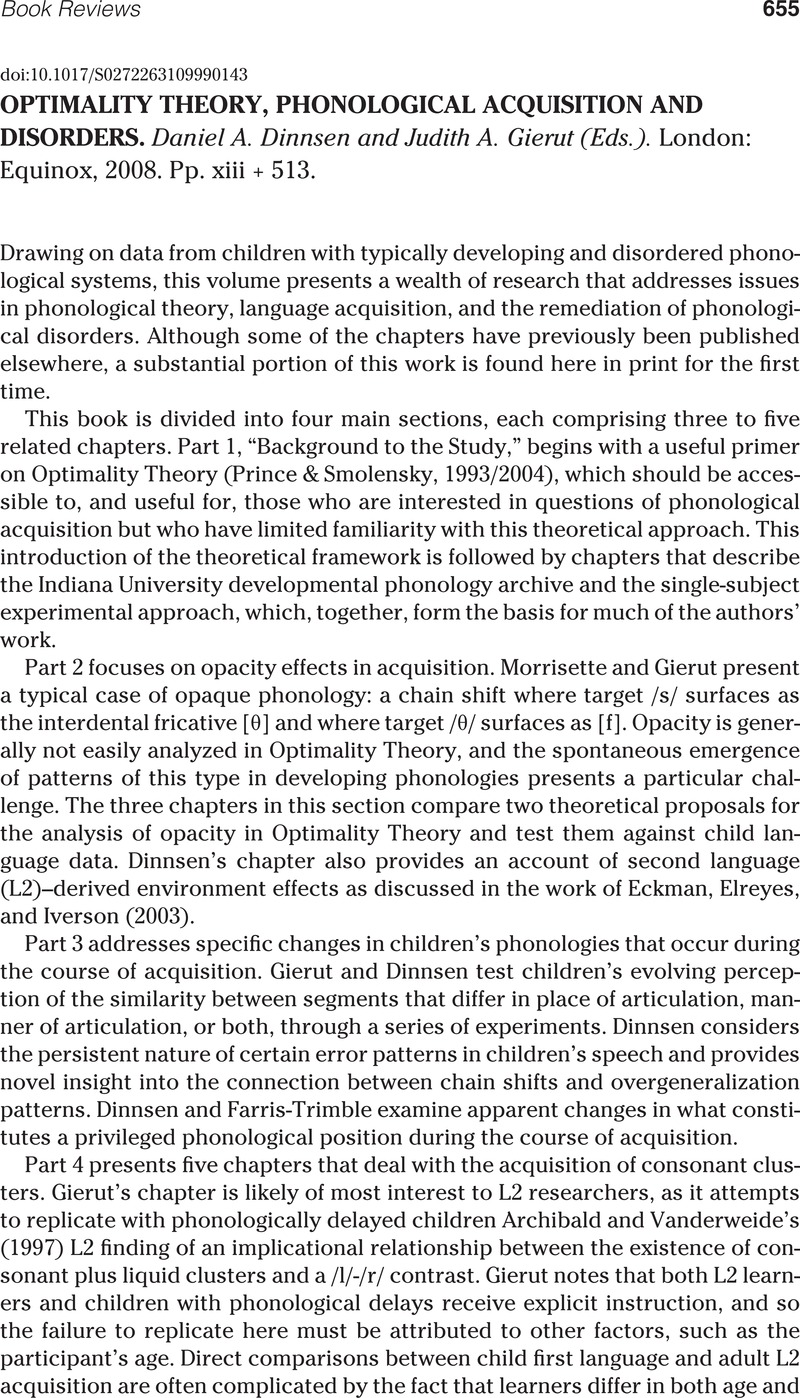No CrossRef data available.
Article contents
OPTIMALITY THEORY, PHONOLOGICAL ACQUISITION AND DISORDERS. Daniel A. Dinnsen and Judith A. Gierut (Eds.). London: Equinox, 2008. Pp. xiii + 513.
Review products
OPTIMALITY THEORY, PHONOLOGICAL ACQUISITION AND DISORDERS. Daniel A. Dinnsen and Judith A. Gierut (Eds.). London: Equinox, 2008. Pp. xiii + 513.
Published online by Cambridge University Press: 01 December 2009
Abstract
An abstract is not available for this content so a preview has been provided. Please use the Get access link above for information on how to access this content.

- Type
- Book Reviews
- Information
- Copyright
- Copyright © Cambridge University Press 2009
References
REFERENCES
Archibald, J., & Vanderweide, T. (1997). Second language syllable structure: Phonological government and typological universals. Calgary Working Papers in Linguistics, 19, 23–43.Google Scholar
Boersma, P., & Levelt, C. (2003). Optimality Theory and phonological acquisition. Annual Review of Phonological Acquisition, 3, 1–50.CrossRefGoogle Scholar
Eckman, F. R., Elreyes, A., & Iverson, G. K. (2003). Some principles of second language phonology. Second Language Research, 19, 169–208.CrossRefGoogle Scholar
Kager, R., Pater, J., & Zonneveld, W. (Eds.). (2004). Fixing priorities: Constraints in phonological acquisition. New York: Cambridge University Press.CrossRefGoogle Scholar
Prince, A., & Smolensky, P. (2004). Optimality Theory: Constraint interaction in generative grammar. Oxford: Blackwell. (Original work published 1993)CrossRefGoogle Scholar
Tesar, B., & Smolensky, P. (1998). Learnability in Optimality Theory. Linguistic Inquiry, 29, 229–268.CrossRefGoogle Scholar


